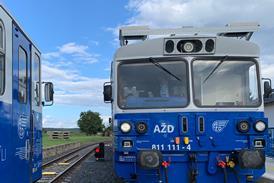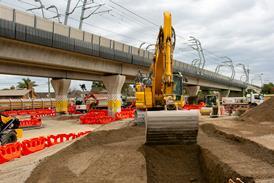- News
- In depth
- Events
- Data
- Maps
- Tenders & Jobs
 Railway Plant Engineer
Railway Plant Engineer RFI No. 608/2025 regarding innovative acoustic solutions for metro stations for NTA
RFI No. 608/2025 regarding innovative acoustic solutions for metro stations for NTA Invitation for Pre-Qualification no. 589/2025 for the Participation in Tenders for the Execution of Infra #1 Works in connection with the Tel Aviv Metropolitan Metro Lines, Israel
Invitation for Pre-Qualification no. 589/2025 for the Participation in Tenders for the Execution of Infra #1 Works in connection with the Tel Aviv Metropolitan Metro Lines, Israel RFI No. 611/2025- for Technological and Innovative Solutions for Depot Equipment and Machinery Plant for the Metro Network
RFI No. 611/2025- for Technological and Innovative Solutions for Depot Equipment and Machinery Plant for the Metro Network
- Sponsored content
- Insights
Close menu
- Home
-
News
- Back to parent navigation item
- News
- Traction and rolling stock
- Passenger
- High speed
- Freight
- Infrastructure
- Policy
- Technology
- Ticketing
- Business
- Research, training and skills
- Accessibility and inclusion
- People
- Urban rail news
- Suburban and commuter rail
- Metro
- Light rail and tram
- Monorail and peoplemover
- Regions
- InnoTrans
- In depth
- Events
- Data
- Maps
- Tenders & Jobs
- Sponsored content
- Insights
An Analysis of Vertical Separation of Railways
By Railway Gazette International2009-09-27T04:00:00

Book review
Already have an account? LOG IN
To continue…
You’ve reached your limit of content for the month










